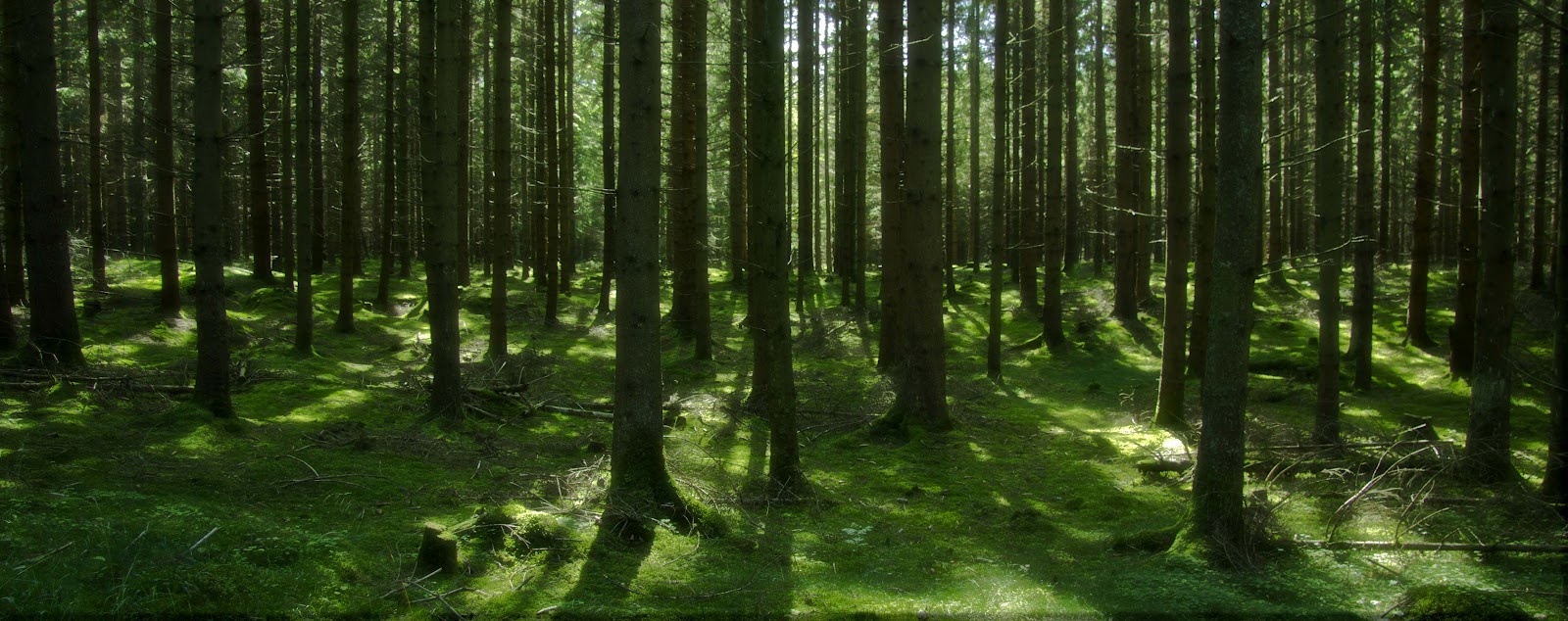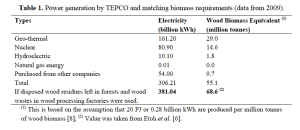
Knowing that Japan’s extensive forests cover 67% of the country, it might be tempting to just say “Why don’t we just cut down all the trees to produce energy?” Actually though, maintaining these forests is just as important as harvesting their resources. Since trees absorb carbon dioxide, these forests act as a carbon sink and help mitigate Japan’s carbon emissions. The amount of energy produced from cutting down these trees would not match the amount of carbon the trees soak up. The best way to utilize the forest’s energy production potential seems to be the use of leftover woody biomass produced from routine thinning of branches and the tree canopy. Often, 70% of this material is just left in the forest (Etoh et al. 2011). Japan recognized the importance of thinning its forest, and in 2007 it allocated funds to begin a 6 year thinning program to increase the amount of carbon forests could absorb. Using this biomass, it’s possible that the “substitution of woody biomass for fossil fuel for energy generation could potentially reduce carbon emissions by 37.8 – 62.6 Tg CO2 year-1 or about 20.0 – 33.2% of Japan’s reduction commitment under the Kyoto Protocol” (Etoh et al). Considering Japan’s goal is to reduce their carbon emissions 25% by 2020, this is potentially a huge contributing factor to reaching that goal.

Thinning is not only important for forests in terms of improving Japan’s carbon sinks. It also improves basic ecosystem functions: thinning promotes the growth of healthy forests, and reduces the risk of disease and soil erosion. If forests aren’t thinned, it’s harder for light to reach the understory of the forest, inhibiting the growth of plants on the forest floor. There have been reports of increased violence of wildlife towards humans in agricultural areas because of food shortages in the animals’ natural forest ecosystem (Sasaki 2011).
Japan has been importing most of its timber, which is one of the reasons the domestic forests have become less of a priority to maintain. However, this “illusion of preservation” is just that — an illusion. Although it seems like forests are being saved, Japan is actually harvesting its timber from other forests in the world, causing habitat fragmentation and other related deforestation problems elsewhere, as well as using extra fossil fuels to import these materials from abroad.
If Japan does decide to use plantations to grow woody biomass, which is a viable option, these second generation woody biofuel crops use considerably less resources than comparable first generation biofuels. Cellulosic biofuels use much less water and fertilizer, and the soil doesn’t need to be as fertile in order for the energy crops to grow.
Other benefits of healthy forests include habitats for wildlife, recreation, aesthetic appeal, and a more effective carbon and water cycle.
